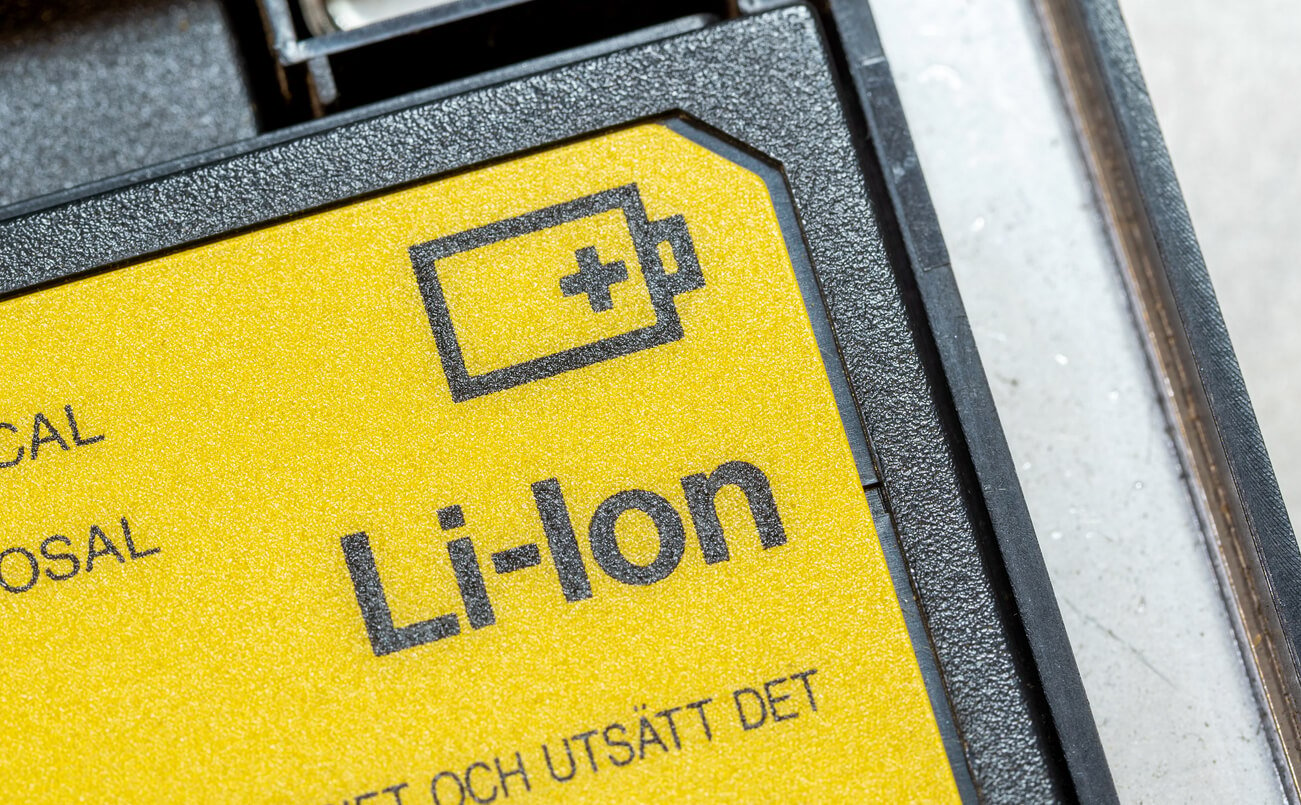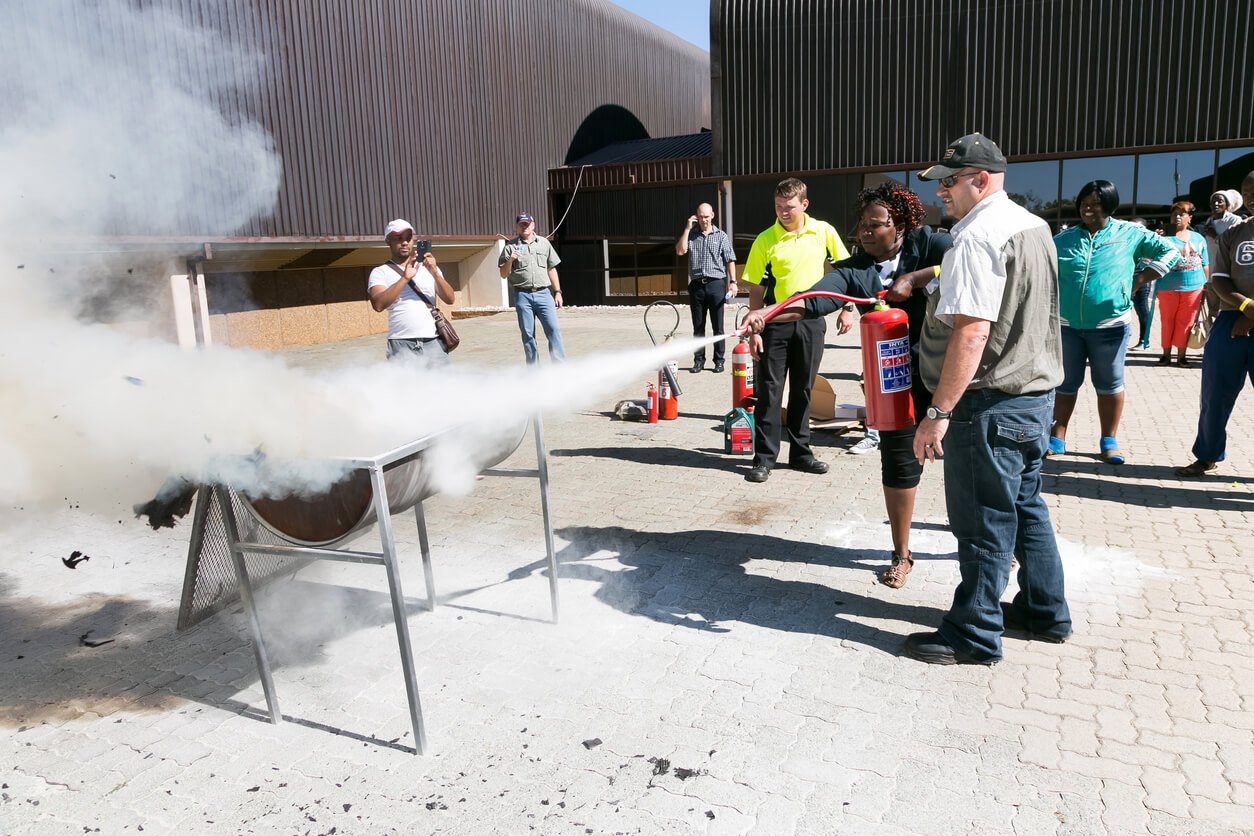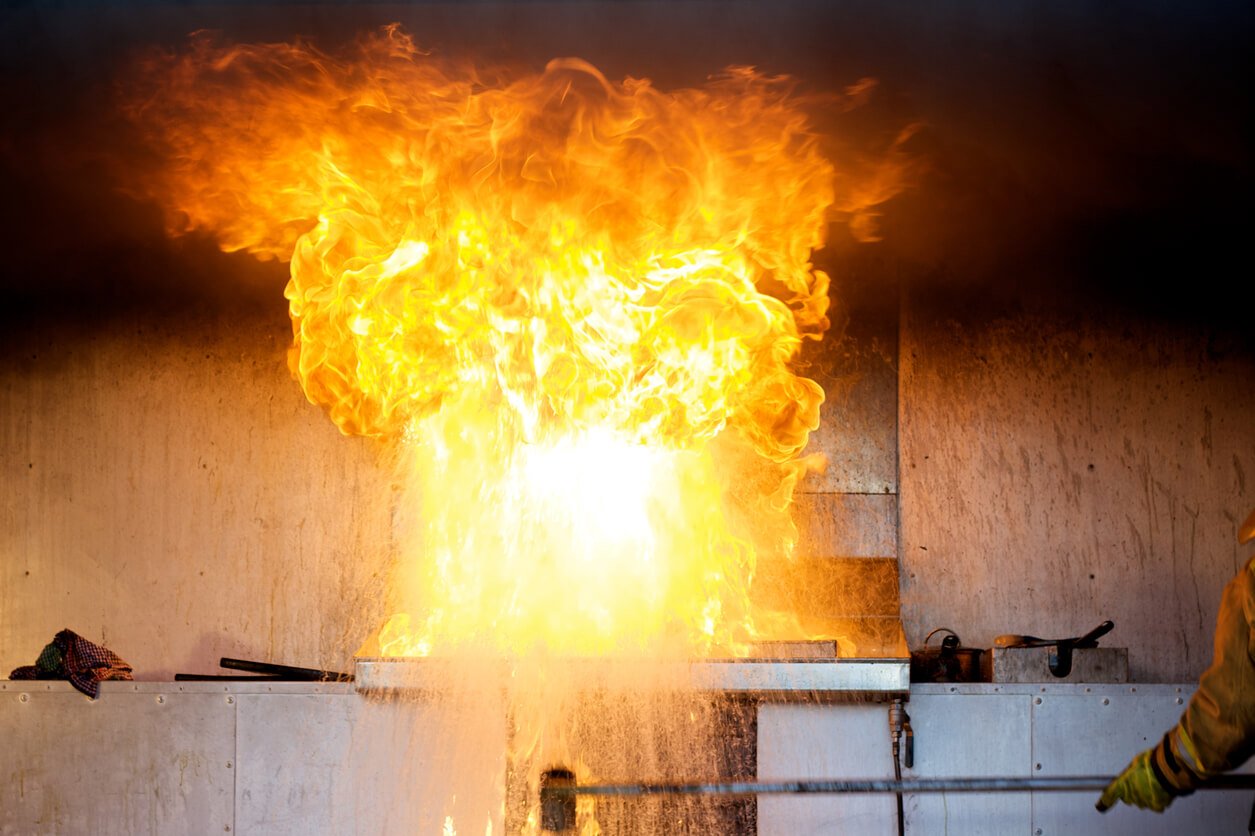Why Lithium-Ion Battery Recycling Matters for Fire Safety
Lithium-ion battery recycling prevents fires throughout the waste management chain.
Proper recycling through certified programs ensures batteries are handled safely during their most vulnerable period—after removal but before processing—protecting your facility and waste infrastructure from thermal runaway incidents.
Lithium-ion batteries power critical infrastructure across commercial facilities—from UPS systems protecting data centers to emergency lighting ensuring safe egress.
But (like any battery), lithium-ion batteries won’t last forever, and properly disposing of them carries both environmental and fire safety considerations.
Data from the Environmental Protection Agency shows that lithium-ion batteries caused or likely caused 245 fires across 64 waste facilities over a seven-year period, demonstrating how improper disposal creates fire risks throughout the waste management chain.
For maintenance teams responsible for battery replacement cycles across multiple systems, understanding lithium-ion battery recycling protocols protects facilities, personnel, and the waste management infrastructure that processes these hazardous materials.
Key Takeaways
- Swelling, excessive heat, and reduced performance signal that batteries have reached dangerous end-of-life conditions.
- Safe lithium-ion battery removal demands visual assessment, insulated tools, protective equipment, and careful handling to prevent short circuits and thermal events.
- Federal regulations classify lithium-ion batteries as Class 9 hazardous materials requiring specialized packaging, certified recyclers, and thorough documentation to ensure compliant disposal.
- Comprehensive inventory tracking, dedicated storage areas with thermal detection, specialized fire safety equipment, and regular staff training create multiple layers of protection against battery-related fires.
When Should You Replace Lithium-Ion Batteries?
Knowing when to replace lithium-ion batteries is the first line of defense in lithium-ion battery fire prevention. These power sources don't simply stop working—they degrade over time in ways that significantly increase fire risk.
You Notice Swelling
Physical swelling or bulging represents one of the most obvious indicators that a battery requires immediate replacement. This swelling occurs when internal chemical reactions produce gases that the battery casing cannot contain, a condition that often precedes thermal runaway.
Similarly, batteries that feel unusually warm during normal operation or charging indicate internal resistance problems that generate excessive heat.
They Aren’t Working As Well
Performance degradation also signals the need for replacement. When backup power supplies fail to hold a charge as long as expected, or when equipment shows significantly reduced runtime, the battery chemistry has likely degraded to a point where safety becomes compromised.
They’re Past Their Lifespan
In commercial applications, different battery types have varying lifespans. UPS systems in data centers typically require battery replacement every three to five years, while emergency lighting batteries may last five to seven years under ideal conditions.
Batteries in material handling equipment often need replacement every two to four years due to frequent charge-discharge cycles. Facility temperatures, charge cycles, and environmental factors all influence battery longevity, making regular monitoring essential.
Smart maintenance programs implement battery management systems that track cycle counts, temperature exposure, and capacity degradation. For facilities without sophisticated monitoring, establishing a replacement schedule based on manufacturer recommendations and conducting quarterly visual inspections helps identify problem batteries before they create hazards.
Tips To Safely Remove A Faulty Lithium-Ion Battery
Safe lithium-ion battery removal begins long before a technician touches the equipment.
Before beginning any battery removal, assess the battery's condition visually. If a battery shows any signs of wear, treat it as a high-risk removal requiring additional precautions.
Never attempt to remove a battery that feels hot to the touch or emits unusual odors—these indicate potential thermal runaway and require immediate evacuation and notification of emergency personnel.
Personal protective equipment requirements for safe lithium-ion battery removal include:
- Safety glasses or face shields to protect against potential electrolyte spray
- Insulated gloves rated for electrical work
- Flame-resistant clothing when handling damaged batteries.
For batteries showing signs of compromise, consider adding respiratory protection and having a Class D fire extinguisher nearby, as lithium-ion battery fires produce toxic gases.
The removal process itself requires deliberate, careful actions. Power down equipment completely and disconnect from charging sources before beginning work. Use insulated tools to prevent accidental short circuits, and never stack removed batteries or allow terminals to contact metal surfaces or other batteries.
Remember, proper handling during removal significantly reduces fire risk during the critical transition from in-service to recycling.
Lithium-Ion Battery Recycling and Disposable Best Practices
Lithium-ion batteries can’t enter standard waste streams. Federal regulations classify them as hazardous materials due to their fire risk and toxic components, making proper disposal through certified recycling programs a legal requirement for commercial facilities.
Use The Proper Packaging
Transportation regulations become particularly important when dealing with damaged batteries or those showing signs of degradation. The Department of Transportation classifies lithium-ion batteries as Class 9 hazardous materials, with specific packaging and labeling requirements for transport.
Damaged or recalled batteries require additional precautions, including individual packaging in non-conductive materials, separation from other batteries, and specific labeling indicating the battery's compromised condition. Some recycling facilities will not accept severely damaged batteries, instead requiring specialized hazardous waste handlers for safe disposal.
Arrange a Drop-Off
There are many battery recycling networks you can look into.
For example, Call2Recycle operates one of the largest battery recycling networks in North America, with drop-off locations specifically designed for commercial and industrial battery volumes. The program accepts lithium-ion batteries from UPS systems, emergency lighting, power tools, and other commercial equipment.
Facilities generating significant battery waste can arrange for direct pickup services, eliminating the need to transport large quantities of end-of-life batteries.
Most major battery manufacturers also operate take-back programs for their products, particularly for large-format batteries used in data center UPS applications.
Document The Process Thoroughly
Commercial battery disposal requires documentation that standard waste does not. Maintain records showing:
- Battery type
- Quantity
- Condition at time of removal
- Destination recycling facility
This documentation serves multiple purposes: it demonstrates regulatory compliance during inspections, provides tracking for warranty claims on equipment that experienced premature battery failure, and creates accountability throughout the disposal chain. Many recycling programs provide certificates of recycling that verify proper handling of your facility's battery waste.
The Link Between Lithium-Ion Battery Recycling and Fire Prevention
Effective lithium-ion battery fire prevention extends beyond individual removal procedures to encompass facility-wide management systems. Here’s what that could look like,
Understand Your Inventory
A comprehensive battery management program starts with inventory tracking.
Document every lithium-ion battery in your facility, including location, installation date, manufacturer specifications, and expected replacement timeline. This inventory enables proactive replacement before batteries reach critical failure points and ensures no forgotten batteries degrade unnoticed in rarely accessed equipment.
Many facilities use asset management software to trigger automatic alerts when batteries approach manufacturer-recommended replacement intervals, removing the burden of manual tracking across hundreds or thousands of battery-powered devices.
Create Dedicated Storage and Safety Protocols
Batteries awaiting recycling require specific handling protocols to keep your people and property safe. Designate specific areas for batteries awaiting recycling pickup, using non-conductive containers with adequate spacing to prevent chain reactions.
Store batteries away from combustible materials in temperature-controlled environments that prevent heat-related degradation.
These designated areas need enhanced fire detection beyond standard smoke alarms—thermal imaging cameras identify temperature anomalies before visible smoke appears, providing critical early warning where multiple batteries accumulate between recycling pickups.
Equip Areas With Specialized Fire Safety Equipment
Lithium-ion battery fires are unique and require specific equipment to suppress successfully.
First, you’ll want to have a Class D fire extinguisher on hand as these extinguishers address metal fires associated with lithium content.
It’s also important to have fire blankets designed for lithium-ion battery fires to provide containment if a battery shows signs of thermal runaway during handling.
Remember to establish clear protocols: if a battery begins overheating, swelling, or emitting smoke, isolate it immediately, evacuate the area, and notify fire protection professionals. Never attempt to move an actively failing battery.
Train Your Team
Training requirements for maintenance staff handling battery removal and storage go beyond basic procedures.
Personnel need to understand the chemistry behind thermal runaway, recognize early warning signs of battery failure, and know appropriate emergency response actions if a battery begins showing signs of compromise during removal.
Regular training updates keep teams current on evolving best practices and new battery technologies entering your facility. Documentation of training completion provides liability protection and demonstrates due diligence in maintaining safe operations.
Keep Your Facility Safe with Smart Lithium-Ion Battery Handling
Fire protection systems play an essential role in managing risks associated with lithium-ion battery storage and handling areas.
As maintenance professionals implement battery management programs, evaluating fire detection and suppression capabilities in equipment rooms, battery storage areas, and other locations with significant lithium-ion battery presence becomes increasingly important.
Contact the fire safety experts at Impact Fire to discuss fire protection system assessments for areas where lithium-ion batteries are stored or serviced.







